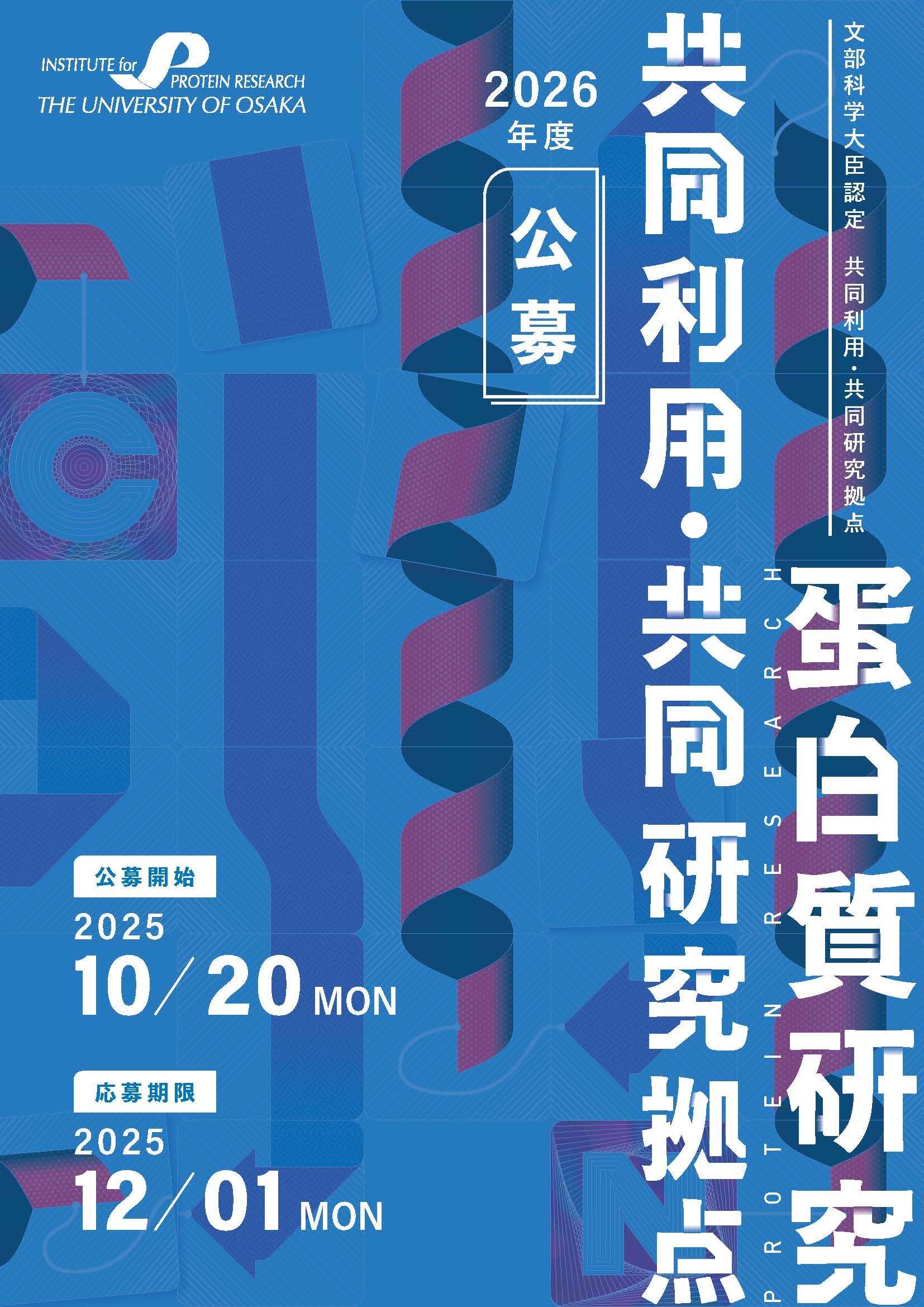![]()
-

- JOINT USAGE / RESEARCH CENTER
- APPLICATION GUIDELINES
APPLICATION GUIDELINES
APPLICATION GUIDELINES
-
International Collaborative Research (FY2026)
IPR invites applications for international collaborative research. Research should be conducted in the form of a collaboration with at least one Principal Investigator (PI) at IPR, or it should use equipment/experimental facilities of IPR listed in the application guidelines. In the fiscal year of 2026, the research period is from April 1, 2026 to March 31, 2027. Successful applicants will receive financial support for their travel expenses, up to the amount determined at the time of acceptance based on the availability of the funds. Each applicant should submit an “Application Form” for his/her collaborative research along with a recommendation from at least one PI at IPR. The submission deadline for FY2026 is December 1, 2025. After review, accepted applications will be announced at the end of March 2026. We also consider urgent proposals submitted after the deadline, at any time during FY2026. However, please note that travel support may not be granted for late proposals.
-
Structural Analysis Collaborative Research (FY2026)
This program unifies four previously independent joint research programs—Beamline for Structural Analysis of Biomacromolecular Complexes, Ultra-High Magnetic Field Nuclear Magnetic Resonance (NMR), Cryo Electron Microscopy (cryoEM), and Microcrystal Electron Diffraction (MicroED) —which were offered separately until fiscal year 2025. In addition to allowing structural analysis using a single technique, this unified program provides the opportunity for correlative structural analysis* using multiple methods. It also accommodates proposals in cases where the most suitable technique has not yet been clearly identified.
-
International Collaborative Research (FY2025)
IPR invites applications for international collaborative research. Research should be conducted in the form of a collaboration with at least one Principal Investigator (PI) at IPR, or it should use equipment/experimental facilities of IPR listed in the application guidelines. In the fiscal year of 2025, the research period is from April 1, 2025 to March 31, 2026. Successful applicants will receive financial support for their travel expenses, up to the amount determined at the time of acceptance based on the availability of the funds. Each applicant should submit an “Application Form” for his/her collaborative research along with a recommendation from at least one PI at IPR. The submission deadline for FY2025 is December 2, 2024. After review, accepted applications will be announced at the end of March 2025. We also consider urgent proposals submitted after the deadline, at any time during FY2025. However, please note that travel support may not be granted for late proposals.
-
Synchrotron Radiation Beamline for Macromolecular Assemblies (FY2025)
IPR is now accepting non-proprietary proposals for 2025 using the Beamline for Macromolecular Assemblies (SPring-8 BL44XU) operated by IPR. This beamline (BL44XU) is specially designed for data collection of biological macromolecule assembly crystals, such as protein complexes, protein-nucleic acid complexes, and viruses. It uses an undulator as a light source. Detail of the beamline is shown on the website:
-
MicroED Collaborative Research (FY2025)
MicroED (Microcrystal Electron Diffraction: Rotational method for the electron diffraction) is the crystallographic technique to collect the diffraction images from thin (< 1μm) 3D crystals in the powder sample. Even in the case that the X-ray experiment only showed the power diffraction pattern from the sample, the MicroED experiment may acquire the diffraction patterns from single crystal(s) and solve the structure of complicated natural compounds or synthetic organic materials. IPR implemented the automatic data acquisition system capable of analyzing samples with crystal polymorph or samples with a low rate of crystalline particles. Since the method is still under development, applicants must operate the electron microscopy with the responsible IPR member.
International Collaborate Research
The research results have to be reported within one month after completion of the collaborative research.
Please submit “2025 Summary of Research Report Form” to us by May 11, 2026.
*The forms are written in English.
*”Summary of Research Report” will be published on this website.
The Synchrotron Radiation Beamline for Macromolecular Assemblies
Form can be downloaded from the web site.
https://www.protein.osaka-u.ac.jp/rcsfp/supracryst/en/research/beamline/Users are required to submit an Experiment Summary Report online within 60 days after the end of each half-year research term. Publish your research in a refereed journal or equivalent (refereed proceedings dissertation, etc.) and register the publications with the Publications Database within three years after the end of the research term. It will be requested to include the sentence which shows the usage of the beamline in the publication, and send the reprint to Institute for Protein Research.
e.g. This work was performed using a synchrotron beamline BL44XU at SPring-8 under the Collaborative Research Program of Institute for Protein Research, The University of Osaka. Diffraction data were collected at the The University of Osaka beamline BL44XU at SPring-8 (Harima, Japan) (Proposal No. 2017BXXXX, 2018AXXXX, and 2018BXXXX).
Accommodations for International Researchers
Information about Accommodations for International Researchers can be downloaded from the web site.
https://www.osaka-u.ac.jp/en/schools/facilities/BandBNavigation Menu
- Return to Index
-
APPLICATION
GUIDELINES - ABOUT US
- DATABASE
-
TOP-END
FACILITIES -
CONTACT US
tanpakuken-kyoten,office.osaka-u.ac.jp p-con,protein.osaka-u.ac.jp
CONTACT
Project Team of Joint Usage / Research Center,
Institute for Protein Research, The University of Osaka
3-2 Yamadaoka, Suita, Osaka 565-0871, JAPAN







